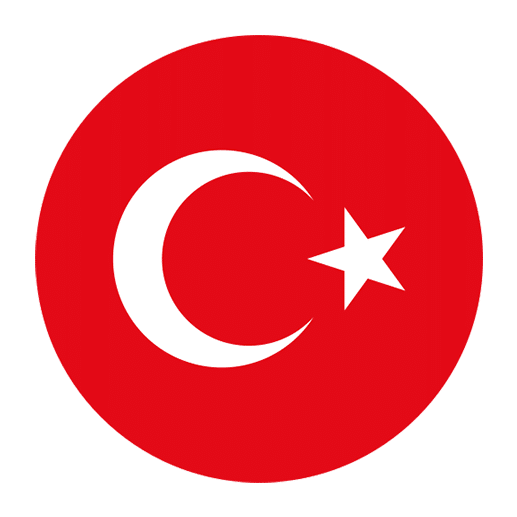When learning a new language, it’s important to familiarize yourself with various aspects of daily life, including how to describe clothing and accessories. In Turkish, the vocabulary for clothing and accessories is rich and diverse, and understanding it can greatly improve your conversational skills. In this article, we will delve into the Turkish vocabulary for various items of clothing and accessories, and provide some useful phrases to help you describe them.
Basic Clothing Vocabulary
Let’s start with the basics. Here are some common clothing items and their Turkish equivalents:
– **Shirt**: Gömlek
– **T-shirt**: Tişört
– **Pants**: Pantolon
– **Jeans**: Kot
– **Skirt**: Etek
– **Dress**: Elbise
– **Jacket**: Ceket
– **Coat**: Mont
– **Sweater**: Kazak
– **Blouse**: Bluz
– **Shorts**: Şort
These are the foundational words you need to know to start talking about clothing in Turkish. It’s also helpful to know how to describe these items in more detail.
Descriptive Adjectives for Clothing
To describe clothing in Turkish, you’ll need to use adjectives. Here are some useful adjectives to get you started:
– **Colorful**: Renkli
– **Patterned**: Desenli
– **Striped**: Çizgili
– **Polka-dotted**: Puantiyeli
– **Plain**: Düz
– **Checked**: Ekoseli
– **Comfortable**: Rahat
– **Tight**: Dar
– **Loose**: Bol
– **Long**: Uzun
– **Short**: Kısa
By combining these adjectives with your clothing vocabulary, you can create more detailed descriptions. For example:
– **Colorful dress**: Renkli elbise
– **Striped shirt**: Çizgili gömlek
– **Comfortable pants**: Rahat pantolon
Clothing Materials
Different materials can make clothing items feel and look distinct. Here are some Turkish words for common clothing materials:
– **Cotton**: Pamuk
– **Wool**: Yün
– **Silk**: İpek
– **Leather**: Deri
– **Denim**: Kot
– **Linen**: Keten
– **Polyester**: Polyester
Using these material words, you can further describe clothing items:
– **Cotton t-shirt**: Pamuk tişört
– **Silk blouse**: İpek bluz
– **Wool sweater**: Yün kazak
Accessories Vocabulary
Now that we’ve covered clothing, let’s move on to accessories. Here are some common accessories and their Turkish equivalents:
– **Hat**: Şapka
– **Scarf**: Eşarp/Atkı
– **Gloves**: Eldiven
– **Belt**: Kemer
– **Sunglasses**: Güneş gözlüğü
– **Watch**: Saat
– **Jewelry**: Takı
– **Necklace**: Kolye
– **Earrings**: Küpe
– **Bracelet**: Bilezik
– **Ring**: Yüzük
Accessories can add a lot of character to an outfit, and knowing how to talk about them in Turkish will enhance your ability to describe people’s appearances and your own style.
Useful Phrases for Describing Clothing and Accessories
It’s not enough to just know the vocabulary; you also need to know how to use these words in sentences. Here are some useful phrases:
– **I am wearing a…**: Ben … giyiyorum.
– **He/She is wearing a…**: O … giyiyor.
– **Do you like my…?**: Benim … beğendin mi?
– **What do you think of this…?**: Bu … hakkında ne düşünüyorsun?
– **This … looks good on you**: Bu … sana yakışmış.
– **Where did you buy this…?**: Bu … nereden aldın?
For example:
– **I am wearing a red dress.**: Ben kırmızı bir elbise giyiyorum.
– **He is wearing a black jacket.**: O siyah bir ceket giyiyor.
– **Do you like my new shoes?**: Benim yeni ayakkabılarımı beğendin mi?
– **What do you think of this scarf?**: Bu eşarp hakkında ne düşünüyorsun?
– **This hat looks good on you.**: Bu şapka sana yakışmış.
– **Where did you buy this necklace?**: Bu kolyeyi nereden aldın?
Shopping for Clothing and Accessories
Knowing how to describe clothing and accessories is also useful when shopping. Here are some phrases you might need when shopping for clothes in Turkey:
– **How much is this?**: Bu ne kadar?
– **Can I try this on?**: Bunu deneyebilir miyim?
– **Do you have this in another size/color?**: Bunun başka bir beden/rengi var mı?
– **Where is the fitting room?**: Deneme kabini nerede?
– **I like this, but do you have it in a different color?**: Bunu beğendim, ama başka bir rengi var mı?
– **I am looking for a…**: Bir … arıyorum.
– **Can you help me find a…?**: Bana bir … bulmamda yardımcı olabilir misiniz?
For example:
– **How much is this dress?**: Bu elbise ne kadar?
– **Can I try this on?**: Bunu deneyebilir miyim?
– **Do you have this jacket in another size?**: Bu ceketin başka bir bedeni var mı?
– **Where is the fitting room?**: Deneme kabini nerede?
– **I like this shirt, but do you have it in a different color?**: Bu gömleği beğendim, ama başka bir rengi var mı?
– **I am looking for a pair of jeans.**: Bir kot pantolon arıyorum.
– **Can you help me find a scarf?**: Bana bir eşarp bulmamda yardımcı olabilir misiniz?
Cultural Considerations
When talking about clothing and accessories in Turkish, it’s also important to be aware of cultural norms and preferences. In Turkey, dressing modestly is often valued, especially in more conservative areas. For example, when visiting mosques or religious sites, it’s respectful to cover your shoulders and knees, and women are often required to cover their heads with a scarf.
Additionally, traditional Turkish clothing, such as the **şalvar** (baggy trousers) and **fes** (a type of hat), can still be seen in rural areas and during cultural festivals. Understanding and appreciating these cultural nuances can enrich your language learning experience and help you connect more deeply with Turkish culture.
Practice Makes Perfect
The best way to become proficient in describing clothing and accessories in Turkish is to practice. Here are a few tips to help you practice:
1. **Label Your Wardrobe**: Put labels on your clothing items in Turkish. This will help reinforce the vocabulary in your mind every time you open your closet.
2. **Describe Outfits**: Practice describing your outfits daily. For example, when you get dressed in the morning, try to describe what you’re wearing in Turkish.
3. **Shopping Practice**: The next time you go shopping, try to use Turkish phrases. Even if you’re shopping online, you can practice by saying the phrases out loud.
4. **Flashcards**: Create flashcards with pictures of clothing and accessories on one side and the Turkish word on the other. This is a great way to test your memory and reinforce your learning.
5. **Conversation Practice**: Find a language exchange partner or join a language learning group where you can practice describing clothing and accessories in Turkish. The more you practice, the more natural it will become.
Conclusion
Describing clothing and accessories in Turkish is a useful skill that can enhance your conversational abilities and deepen your connection to Turkish culture. By learning the basic vocabulary, descriptive adjectives, materials, and useful phrases, you’ll be well-equipped to talk about fashion and style in Turkish. Remember to practice regularly and immerse yourself in the language as much as possible. Happy learning!

